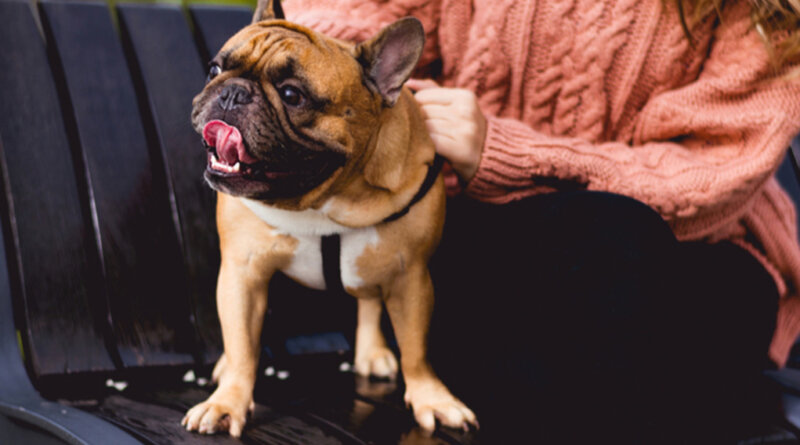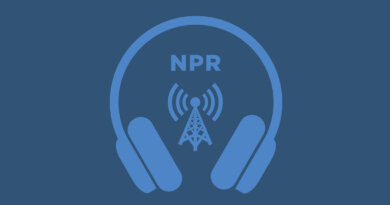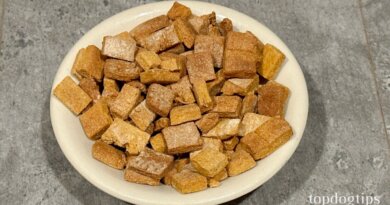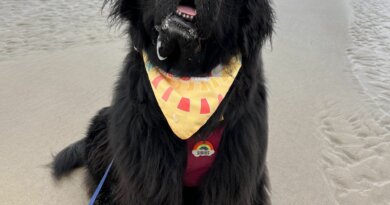Best Care for Flat-Faced Dog Breeds
They are playful, sweet, bright, and usually patient. But are you willing to accept the health risks hardwired to the genes of flat-faced dog breeds?
If you are, you’re not alone.
In a survey conducted in the UK, 93% of flat-faced dog owners would still choose to own these breeds again even if they’re strongly predisposed to several diseases.
The good news is there are things you can do to keep your brachycephalic dog healthy.
And today, we’re going to discuss that with you.
In this article, we’ll share with you:
- What are flat-faced dog breeds, and why do they exist
- Why are they prone to several health conditions
- And how can you provide the best care to prevent your pet from suffering
So, if you own a flat-faced dog or planning to own one, this in-depth discussion about flat-faced dog breed with loads of health care tips is for you.
What Are Flat-faced Dog Breeds?
As its name suggests, these breeds have “shortened snouts” that make them look “flat-faced.” In other words, they’re short-headed.
One famous example of a flat-faced dog is the wrinkly, short-muzzled Pug with curly tails.
If you compare it to the equally popular Labrador Retriever, you’d easily distinguish which belongs to the flat-faced dog breed category.
Its official term is “brachycephalic,” derived from ancient Greek words that mean “flat face.”
What’s the Problem with Flat-faced Dog Breeds?
Brachycephalic dogs face many health conditions.
Although it could vary in every dog, dog owners need to be aware of these diseases and their symptoms:
1. Respiratory Problems in Flat-faced Dog Breeds
The structure of its head and nose make them predisposed to the Brachycephalic Obstructive Airway Syndrome (BOAS).
It is a set of different upper airway abnormalities that cause respiratory distress in dogs.
Types of abnormalities in a dog’s airway:
Stenotic nares
Their small or narrow nostrils prevent the airflow to their nostrils, thus leading to breathing problems.
Elongated soft palate
If a dog’s soft palate, the soft part of the mouth’s roof, becomes too long and extends to the back of the throat, it can block the trachea.
Hypoplastic trachea
Brachycephalic dog’s windpipes or trachea are a diameter smaller than the normal.
The windpipe plays a crucial role in pulling the air from the nose to the lungs.
And if it’s smaller than the usual, it takes more effort to pull the air.
It can cause strain on the dog’s muscles and tissue around its windpipe, which worsens the condition.
Everted laryngeal saccules
When soft tissue called laryngeal saccules located inside the dog’s larynx were pulled into the trachea or windpipe, it may obstruct airflow.
Symptoms of Brachycephalic Obstructive Airway Syndrome (BOAS)
The signs your flat-faced dog is having difficulty in breathing include:
- Snores a lot
- Collapses
- Snorting and sneezing
- Noisy breathing and panting
- Has a hard time recovering from an exercise
- Have trouble cooling down during warm weather
- Sleeping while sitting up or falling over when sitting up
- Gum Discoloration because of lack of blood oxygenation
2. Eye Problems of Flat-faced Dog Breeds
Flat-faced dogs’ eyes protrude further than those of other breeds due to shallow eye sockets.
So, their eyes are more susceptible to either watery or dry eyes, corneal damage, ulceration, and infection.
Other eye problems of flat-faced dogs are proptosis or displacement from the socket and entropion, which refers to the condition where the eyelid turns inward.
So, your eyelashes and skin rub against the eye’s surface.
3. Dental Issues in Flat-faced Dog Breeds
Due to their small jaw structure, most flat-faced dogs are susceptible to dental problems such as underbite, overcrowding, or overlapping teeth which can cause periodontal disease.
4. Skin Conditions of Flat-faced Dog Breeds
Their wrinkly face, which has deep skin folds, often trap dirt and moisture. That’s why they’re prone to yeast infections and other skin conditions.
Therefore, as a fur parent, you need to regularly check your pup’s skin and consult with your vet if you notice any sign of skin problems.
How to Provide the Best Care for Flat-faced Dog Breeds?
Here are some tips on what to do if your fido already shows signs of Brachycephalic Obstructive Airway Syndrome and how to minimize the risks.
What Should You Do If your Dog Shows Signs of Brachycephalic Syndrome?
The first thing that you should do is to consult your vet.
A vet can diagnose the syndrome by analyzing your dog’s breed, clinical signs, and results of a series of examinations.
An elongated soft palate and everted laryngeal saccules can be diagnosed through heavy sedation or full general anesthesia.
On the other hand, visual inspections can diagnose stenotic nares with cameras that can scan and check the airway.
Dogs with this syndrome tend to have higher risks of complication due to general anesthesia.
So, your vet may recommend pre-anesthetic blood work and chest X-rays as an alternative to minimize the risks.
If your pet goes the general anesthesia route, your vet might recommend doing the surgical operation at that same time.
Treatment Options for BOAS
The treatment for your fido may vary depending on the type of abnormality that occurs in your dog. If your dog is at a critical stage, your vet may the following:
Surgical operation for stenotic nares
This abnormality can be corrected by removing a wedge of tissue from the dog’s nostrils to open it up and improve the airflow.
Surgical operation on their soft palate
By shortening the soft palate into a more normal length, your fido may be able to breathe easier.
Surgical operation on everted laryngeal saccules
Removing the tissues that obstructs the larynx is one of the best ways to improve airflow.
Aside from those surgeries, other short-term preventions can help ease the distress your canine companion may be experiencing.
Care Tips to Minimize the Symptoms of Brachycephalic Syndrome
In this section, we’ll discuss how you can minimize the symptoms of BOAS and improve your fido’s overall health.
Limit exercise
It’s crucial to limit exercise and avoid overexcitement because over-exercising can lead to breathing difficulties.
In the worst-case scenario, your fido may even collapse or faint.
So, when taking a walk, you need to be at a gentle pace.
It would also help if you’d frequently take breaks to rest and cool down.
And it would also be best to use a harness as an alternative to a collar to avoid restricting your canine’s windpipe.
Avoid hot weather
Since brachycephalic canines have problems cooling down, you need to limit their exercise during warm and hot weather and give plenty of freshwaters.
You also have to keep your dog indoors when it’s hot outside because leaving your pet outdoors can also put their lives at risk.
Watch out for signs of exhaustion or heat stroke. It includes heavy panting, a fast heartbeat, extreme lethargy, and excessive thirst.
Control the weight
Obesity can worsen the symptoms of brachycephalic syndromes, such as heat intolerance, snoring, and noisy breathing.
So, keeping a flat-faced dog’s weight at a healthy range is vital.
You can do it by:
- Feeding your fido with a balanced and species-appropriate diet
- Avoiding overfeeding
- Providing foods with high-quality protein
- Avoiding low-quality filler ingredients in their food like corn, meat by-products, and artificial preservatives
- Adding natural supplements to their diet to improve their metabolism, suppress appetite, and support weight loss
Ensure safety when traveling
Whether you’re taking a short trip or a long vacation, you need to keep your fido comfortable throughout the travel.
A spacious, durable, and well-ventilated travel carrier can help you with that.
When traveling by air, you also have to ensure your carrier is soft, comfy, and airline-approved.
Please do take note that keeping a brachycephalic dog on a plane’s cargo hold is deadly.
Based on recent statistics from USDA, 50% of all canines who died on a plane were brachycephalic.
So, experts recommend avoiding it all cost.
Care Tips for Flat-faced Dog Breed’s Overall Health
Here are some tips to ease their struggle for other issues like eye injuries and dental and skin problems.
Dental Care for Flat-faced Dogs
Starting a cleaning and brushing routine at a young age is essential to prevent dental problems like plaque build-up, leading to periodontal disease.
Use a toothpaste specifically designed for dogs as much as possible and brush a part of your daily routine, preferably twice a day.
Attending regular dental checkups with your vet can also help to ensure health concerns can be diagnosed early.
Eye Care for Flat-faced Fidos
If you notice that your fido’s eyes are red, irritated, dry, or tearing excessively, you need to speak with your vet immediately.
Having regular ophthalmic (eye) examinations are also essential to avoid other severe serious problems that require an operation.
It would help, too, if you’d include eye-care products on your first-aid kit. But, it would be best to consult your vet before applying anything.
Skin Care for Flat-faced Dog Breeds
The facial wrinkles and skin fold in a flat-faced dog’s face need regular cleaning to prevent itchy skin and problems like skin fold dermatitis, pyometra, and yeast infections.
You can use a wet washcloth or chemical-free and anti-septic wipes to remove the dirt and debris from the skin folds.
Some people incorporate essential oils into their fido’s skincare routine that are antibacterial and antifungal.
Ear Care for Brachycephalic Dogs
Flat-faced dogs with narrow ear canals need frequent ear cleanings to prevent ear wax build-up that can cause infections.
You can do it at home or with the help of pet groomers.
Which Dog Breeds Are Flat-faced?
Pugs aren’t the only flat-faced breed in the world. Other dog breeds that belong to this category include:
French Bulldog
Currently ranking as the second most popular breed in AKC, this breed has charmed millions of dog lovers.
It has big upright ears, wide-set eyes, a wrinkly forehead, tiny legs, and a beautiful coat pattern.
Since it’s a low to medium-energy breed, it doesn’t need much exercise.
French bulldogs are curious and active in obedience and agility competitions.
But sadly, due to their brachycephalic build, they’re prone to snoring and suffer from difficulty in breathing.
American Bulldog
Just like their French and English counterparts, American bulldogs also suffer from flat face structure.
But not to the same extent as the other bulldogs.
It’s a working dog full of energy, and it loves environments that offer physical and mental enrichment programs.
This breed tends to have a standoffish personality, but training at an early age and implementing rules and boundaries can help them behave well.
Due to their energetic nature, they’re prone to breathing issues, so you’ll need to keep your attention on them.
English Bulldog
English or British bulldog currently ranks fifth at American Kennel Club’s list of most popular breeds.
It’s a friendly breed with an easy-to-groom short coat and a statuesque figure.
Even if bulldogs belong to low-energy breeds, they like to please their owners. And with the proper training at a young age, they’ll excel in obedience training.
Since they’re less active and more laidback, they need regular exercise and a healthy diet to keep themselves from gaining weight.
Boston Terrier
With its distinct tuxedo-like markings, Boston Terrier is an easy-to-recognize breed.
Its sparkling eyes, lovable character, and trainable temperament make it a well-loved fido.
It’s featured in several films, including “Back-up Plan,” “Valentine’s Day,” and “Hotel for Dogs.”
Its flat face caused it to be prone to overheating during the summer months, though.
If you want your Terrier to stay healthy, providing a balanced diet can help your pup live happily and thrive.
Affenpinscher
This breed, characterized by a wiry coat, small adorable eyes, and alert expressions, looks comparable to Wookie from Star Wars.
Based on its history, it used to be a multi-purpose breed that chases rats during the day and serves as a bed-warmer for its owner at night.
It can live well both in apartments and in the countryside.
Sadly, this Wookie-look-a-like dog breed is susceptible to breathing issues, especially during hot weather.
It can also lose interest in training quickly.
So, if you’re planning to train your Affenpinscher, it would be best to do it shortly and sweetly.
Japanese Chin
This catlike cutie with a long, profuse, and soft coat oozes with aristocratic charisma.
It belongs to the toy group and lives around 10 to 12 years. Due to its tiny size, it’s ideal for apartment living.
Chins are fast, graceful, and trainable, but they’re reserved with strangers.
These tiny beings are a bit active and will enjoy slow walks with their owners.
They’re prone to getting overweight, though, so you need to watch out for their calorie consumption.
Due to its long coat, it may look like it needs high-maintenance grooming.
But the truth is it only needs weekly brushing and bath once a month.
Chow Chow
This breed of Chinese origin has a compact build that can stand as high as 20 inches.
Its blue-black tongue, ruff similar to a lion’s mane around its head and shoulder, curly tails, and deep-set almond eyes are the traits that make it distinguishable from other breeds.
Chow is active, and moderate exercise can already make them happy, but it has heat intolerance.
Two to three times a week of thorough brushing will do, but you also have to make sure that it’s free from parasites like fleas and ticks.
Shih Tzu
This breed has what it takes to be an adorable pet, from its luscious-flowing locks to its tiny size, lovely face, and affectionate personality.
Although sometimes it barks a lot at other dogs, it’s playful and friendly, especially the male ones.
Since Shih Tzus is covered with long coats, some people do not notice it has a flat face.
It can be a good family pet and ideal for older people who need a low-energy companion who needs minimal exercise and healthy dog food.
Most Shih Tzus have small nostrils, trachea, and windpipes, so they’re susceptible to breathing issues.
Keeping their locks well-groomed is also crucial to avoid additional breathing challenges.
Chihuahua
This compact little being is an alert “purse dog” with a terrier-like demeanor but height below 6 inches.
It boasts a rounded apple head, large and erected ears, and luminous and expressive eyes.
Chihuahuas are charming and loyal with a big-dog attitude.
They love to run and play. But trotting around their owners is already enough exercise for Chihuahuas.
You have to watch out, though. Overexercising can cause them to pant. And when they do, it’s time to carry them home.
Brussels Griffon
Griffons are tiny bearded folks with big, human-like eyes.
They have complex characters. Although they have playful, friendly, and energetic nature, they can be sensitive sometimes.
There are smooth-coated varieties and rough-coated ones.
Smooth-coated Brussel Griffons need weekly brushing during their shedding season, while rough-coated types do not shed.
Dogue de Bordeaux
This red-coated breed with a wrinkly face and expressive eyes is among the most well-loved flat-faced fidos.
Its popularity can be credited to the film “Turner and Hooch” starring Tom Hanks, who made the breed known to the masses.
It also educated the people about various personalities it may show.
It has a lovable and patient character which is why it got the nickname gentle giant.
But it has one undesirable trait – it drools.
Bull/ Neopolitan Mastiff
The distinctive droopy look of this large breed has been effective in deterring intruders.
So, Mastiffs guarding ability is what sets it apart from other flat-faced breeds.
Although they tower other dogs, they’re sensitive and would quickly get upset when spoken to harshly.
So, they need a kind and gentle approach and regular exercise combined with a proper diet to be healthy and fit.
Pekingese
This 1-9 inch diminutive but the noble breed has a great name that translates to “Lion Dog.”
It came from China and is one of the most adorable-looking flat-faced dog breeds.
With its thick and double coat and darker points in its face(mask), this fido can surely take your heart away.
It’s a bit laid-back, but it does enjoy walking and playing at its own pace.
Aside from being prone to breathing difficulties, it may also suffer from sight issues due to the excess skin around its cutie eyes.
Lhasa Apso
This long-coated pal has an aristocratic bearing, and its look says it all.
Its dark, oval-shaped eyes, luxurious facial hair, and floor-length, flat-hanging coat set it apart from others.
This pup is intelligent, confident, and comedic but aloof with strangers.
Lhasa Apsos need a diet with good protein and fat levels. And even a slight overfeeding can lead to digestive problems.
Boxer
This breed lives true to its name. They overflow with energy, and they love an active lifestyle.
It’s an ideal guard dog, and it’s loyal too.
It can be a bit goofy, though, and if not appropriately trained, it can be destructive to your home once it gets boring.
Aside from its flat face, you can identify a boxer through its color and markings.
Most boxers are tan, while others are white and bridle.
Both the tan and bridle varieties have white markings that run down to its chest.
Although boxers tend to snore a lot and have breathing difficulties, they don’t suffer as much as other brachycephalic breeds.
Shar-pei
Shar-pei is an ancient pedigree of Chinese origin.
The unique physical traits of this breed include its broad “hippopotamus” muzzle, tiny triangular ears, sunken eyes, and a blue-black tongue.
It may also look cold at strangers and reserved, but it’s loyal, regal, and brilliant.
That explains why it needs mentally stimulating play in its routine.
Thanks to its rough velvet coat, though, it doesn’t need much grooming.
It can also quickly adapt to its owner’s lifestyle, whether it’d be active and outdoorsy or sedentary.
Cavalier King Charles Spaniel
As you probably noticed in its name, this breed has some connection with British history.
This Spaniel’s looks are as regal as its name. It has a shiny, silky, and beautifully colored coat, brilliant and sweet, and affectionate eyes.
They’re well-loved for having both gentle attentiveness, friendliness, and athleticism.
This type of pup is also prone to getting overweight, so it’s essential to control their calorie intake and weight to prevent obesity.
Pugs
One of the most distinguishable flat-faced dog breeds is the Pug which belongs to the toy group.
It has a snub nose, wrinkled face, small, squarish body, and short but glossy coat.
Despite its petite size, it’s well-loved for its charming and affectionate personality.
This breed is innately lazy, though, so it’s prone to weight gain.
You’ll need to encourage them to exercise by playing and walking if you want them to avoid getting fat.
It’s also susceptible to breathing issues, especially in hotter climates.
Why Do Flat-faced Dog Breeds Exist?
A study about Canine Brachycephaly conducted in the US suggests two stories about why flat-faced dog breeds exist.
The first theory states that breeders purposely bred them to develop a trait that makes them better at fighting.
Some believed that the shorter snouts help create stronger jaws that can be an edge for canines in hunting and fighting.
The other theory is centered on the belief that ancient dog owners preferred smaller breeds with short noses because it reminds them of human infants.
Why Are Flat-faced Dog Breeds Popular Despite Their Health Problems?
As mentioned earlier in this article, in a survey of 2,168 brachycephalic dog owners, 93% of them would choose to reacquire the same breed again.
And 65% of them will recommend their pet’s breed to others.
So, despite the inherent health risks in flat-faced dog breeds, they’re still experiencing a “population boom.”
But why do dog owner’s loyalty does not waver despite the health risks hardwired to these breed’s genes?
Reasons Why Flat-faced Dog Breeds Are Popular
Flat-faced Dog Breed’s “Baby Schema effect.”
A survey says that one of the reasons why humans are drawn to brachycephalic breeds due to their resemblance to human infant faces.
It triggers positive emotions in adult humans and an impulse to nurture.
This phenomenon is called the “baby schema effect.”
The research also showed that dog owners who have a strong bond or emotional attachment with their pets are those who would reacquire and recommend their pet’s breed.
Positive behavioral attributes of Flat-faced dog breeds
The lovable qualities of flat-faced dog breeds, such as being trainable, patient, and loyal, are some of the reasons why owners feel more attached to them.
Aside from flat-faced dog breeds’ adorable looks, their beautiful qualities make them excellent four-legged companions.
Suitability for a sedentary lifestyle
Other people prefer flat-faced dog breeds due to their lazy nature, that they don’t need much exercise.
They’re also suitable for small living spaces, especially tiny ones.
Ideal for households with children
While every breed’s personality varies, most brachycephalic dogs are innately affectionate and patient.
That’s why many owners find their companions safe for their children.
Besides, it’s a beautiful sight to see canines playing and getting along with kids.
Our Final Thoughts About Flat-faced Dog Breeds
While these canines breeds have lovable looks and positive traits, some brachycephalic canine owners have reservations about reacquiring them.
Owners explained in a study that the high prevalence of health issues, high expense, and ethical issues regarding breeding made them change their minds.
Other owners have experienced negative behaviors, too, while others have expressed that having flat-faced dogs had adverse effects on their lifestyle.
It is unclear why many people neglect that they’re prone to diseases from head to toe.
However, if you’re a first-time dog owner, you need to be aware and educated about their cons.
If you want to avoid a disease-prone dog, it would be best to take Rowena Packer’s advice.
She’s an animal behavior lecturer from Royal Veterinary College who led the study mentioned earlier.
Breeding out of breathing disorders is difficult, and according to her, the only way to completely avoid those problems is by choosing a breed with a normal and healthy snout and body shape.
But, if you already have one, taking care of your brachycephalic companion is crucial to prolong its lifespan.
By keeping it healthy and fit and being aware of the red flags related to their health, you can keep your brachycephalic for a long time.
READ NEXT: Scientists Found Out Why Pugs, Boxers, and Bulldogs Have Flat Faces
Related




































